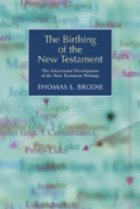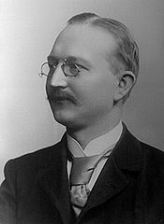 As signalled in a comment on my recent post on the single authorship of Genesis to 2 Kings, I have decided it best to back-track a little before continuing that series and posting a little on how oral tradition came to be a ruling paradigm among Biblical scholars and why an increasing number of scholars, especially those who study the Gospels, are coming to question whether it has any place at all in the creation of the biblical stories. This post begins to cover Thomas L. Brodie’s chapter, “Oral Tradition: Wonderfully Plausible but Radically Problematic”, in The Birthing of the New Testament: The Intertextual Development of New Testament Writings.
As signalled in a comment on my recent post on the single authorship of Genesis to 2 Kings, I have decided it best to back-track a little before continuing that series and posting a little on how oral tradition came to be a ruling paradigm among Biblical scholars and why an increasing number of scholars, especially those who study the Gospels, are coming to question whether it has any place at all in the creation of the biblical stories. This post begins to cover Thomas L. Brodie’s chapter, “Oral Tradition: Wonderfully Plausible but Radically Problematic”, in The Birthing of the New Testament: The Intertextual Development of New Testament Writings.
.
There was a time when the gospels were seen as the product of writing — of competent authors using some ancient form of pen and writing materials. It was presumed that the evangelists [i.e. gospel authors] had either been present at many of the events they described (like Matthew and John) or had received their information from authoritative sources (Mark from Peter, and Luke perhaps partly from Paul.) (p. 51, The Birthing of the New Testament, by Thomas L. Brodie)
Given that the time-gap between the events narrated and the gospels was at most fifty or sixty years, it was understood that eye-witness testimony in some form (oral or written) was available to even the latest of evangelists.

Enter Oral Tradition as the New Paradigm
Julius Wellhausen in 1876 made mention of oral tradition but it was Hermann Gunkel in his 1901 commentary on Genesis who
used it as a model and who thus introduced it to the center of biblical studies.
Gunkel went against the perceptions of those who had gone before by failing to see Genesis as artistic literature. Further, Gunkel implied that his model “could be applied to the life of Jesus.” (Brodie, p. 51)
In effect, he gave the twentieth century a new paradigm.
The Gospels become UNliterary
Soon the new idea of “form criticism” began to appear in New Testament studies. Wellhausen went beyond Gunkel’s implication and secured a central role for oral tradition in Jesus studies with his series of commentaries and introductions to the gospels 1905-1911. Bultmann summarized Wellhausen’s contribution:
The oldest tradition consisted almost entirely of small fragments . . . and did not present a continuous story of . . . Jesus. When these fragments were collected they were connected so as to form a continuous narrative. . . [Wellhausen] showed not only that they evangelists’ narratives . . . were secondary, but also that oral tradition was steadily producing more and more new sayings of Jesus. (Bultmann, 1926, quoted on p. 51 Birthing of the New Testament)
K. L. Schmidt introduced the model of the Gospel of Mark that has been widely embraced among scholars up to today and that has been discussed in recent posts reviewing Jesus, Criteria, and the Demise of Authenticity:
In 1919 he used Gunkel’s model to distinguish between Mark’s framework, which Schmidt reckoned came from the evangelist, and Mark’s various units, which Schmidt assigned to oral tradition . . . Continue reading “Oral Tradition Behind Gospels and OT: Unfounded, Unworkable and Unnecessary”
